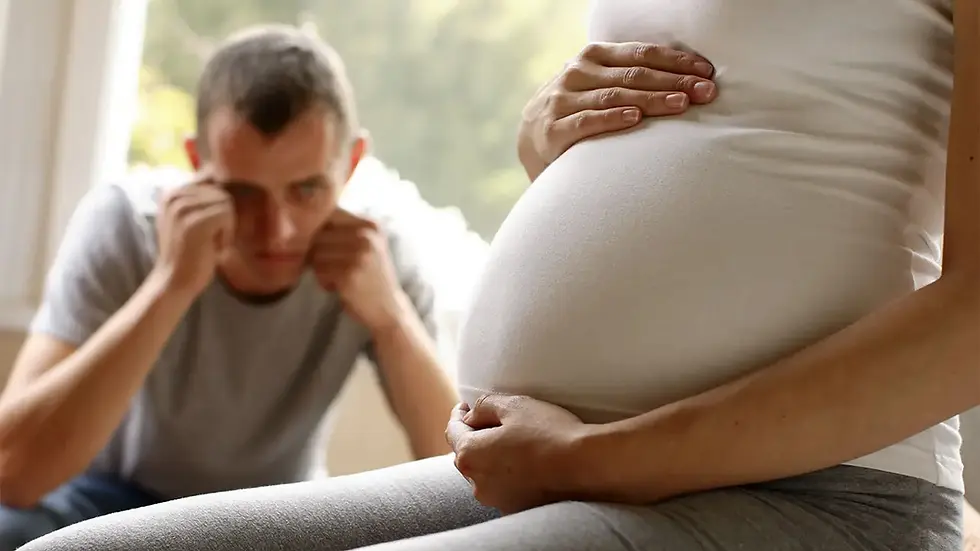Understanding Congenital Diaphragmatic Hernias (CDH): Symptoms, Treatment, and Support Resources
- Charlie's Warrior of the Angels

- Aug 25
- 3 min read

What Is a Congenital Diaphragmatic Hernia?
Congenital diaphragmatic hernias (CDH) are rare but serious birth defects that occur when the diaphragm does not form properly before birth. The diaphragm is the muscle that separates the chest cavity from the abdominal cavity and helps with breathing. When a congenital diaphragmatic hernia develops, abdominal organs such as the stomach, intestines, or liver can move into the chest cavity. This limits lung growth and can cause significant breathing difficulties after birth.
Congenital Diaphragmatic Hernia Symptoms
Symptoms of congenital diaphragmatic hernia are typically apparent shortly after birth and may include:
Severe difficulty breathing
Rapid breathing or grunting
A sunken abdomen with a chest that appears larger or more full
Bluish skin tone due to lack of oxygen
Abnormal chest sounds when breathing
In most cases, congenital diaphragmatic hernia symptoms can be detected before birth during routine ultrasounds. Prenatal diagnosis allows parents and healthcare providers to prepare for specialized care at delivery.
Congenital Diaphragmatic Hernia Treatment and Repair
Treatment for congenital diaphragmatic hernia almost always requires surgery. Congenital diaphragmatic hernia repair involves returning the abdominal organs to their correct place and closing the hole in the diaphragm. In some cases, a patch may be used if the defect is too large to close with stitches alone.
Before surgery, newborns often require intensive care, including breathing support through a ventilator or extracorporeal membrane oxygenation (ECMO), which provides oxygen directly to the blood while the lungs develop. The timing of the congenital diaphragmatic hernia repair depends on the baby’s overall stability and health.
Congenital Diaphragmatic Hernia Life Expectancy
+
Life expectancy for babies born with congenital diaphragmatic hernia varies depending on the size of the defect, the degree of lung underdevelopment, and whether additional complications exist. Advances in neonatal care, surgery, and ongoing research have significantly improved survival rates. Many children go on to lead healthy lives, though some may face long-term challenges such as chronic lung disease, feeding difficulties, or developmental delays.
Coping With a Congenital Diaphragmatic Hernia Diagnosis
Receiving a diagnosis of congenital diaphragmatic hernia can be overwhelming. Support from dedicated organizations and other CDH families can make a life-changing difference.
Start with Charlie Polizzi's Warrior of the Angels Foundation:
At Charlie Polizzi's Warrior of the Angels, families can access education, awareness initiatives, and a strong community of parents, survivors, and advocates. The foundation provides resources, guidance, and encouragement for those facing CDH, helping ensure no one walks this journey alone.
Additional Trusted Resources:
Frequently Asked Questions About Congenital Diaphragmatic Hernias
What is congenital diaphragmatic hernia (CDH)?
Congenital diaphragmatic hernia is a birth defect in which the diaphragm does not fully develop, allowing abdominal organs to move into the chest cavity. This prevents the lungs from developing properly and often leads to breathing difficulties after birth.
What are the symptoms of congenital diaphragmatic hernia?
Common symptoms include difficulty breathing, rapid breathing, a sunken abdomen, bluish skin tone, and unusual chest sounds. Many cases are diagnosed prenatally through ultrasound.
How is congenital diaphragmatic hernia treated?
Treatment typically involves congenital diaphragmatic hernia repair surgery. Surgeons return the abdominal organs to their correct position and close the defect in the diaphragm. Before surgery, babies may require intensive care such as ventilator support or ECMO.
What is the life expectancy for congenital diaphragmatic hernia?
Life expectancy varies based on the severity of the defect, lung development, and other complications. Advances in neonatal care and surgery have significantly improved survival rates, and many children with CDH now live healthy lives, although some may face ongoing medical challenges.
Moving Forward with Hope
Congenital diaphragmatic hernias present complex challenges, but families are never alone. With medical advances, strong CDH programs, and compassionate community support from Charlie Polizzi's Warrior of the Angels, children with CDH have greater chances of survival and quality of life than ever before.






Comments